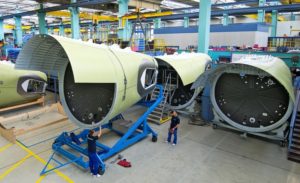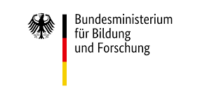4by3 - Effective and safe human-robot collaboration
Problem definition and objectives
The current EU research project 4by3 is currently implementing various scenarios for human-robot cooperation. Work packages from ZeMA include the development of a human-robot-capable system and the implementation of two application scenarios.
Human-robot cooperation systems are partly already used in production and represent an approach to demand-oriented and, if necessary, temporary automation through human-robot cooperation (HRC). The HRC in the production environment shows different challenges, for example the user-friendliness and efficiency. Further aspects are the fast adaptation of the systems to the different tasks and the safety which enables a cooperation between man and robot. The robot systems available on the market so far each have specific disadvantages and cannot fully meet the mentioned requirements.

The aim of the FourByThree project is to develop a new robot system that meets the challenges of human-robot collaboration at shared workstations. For this purpose, the robot system should have four main characteristics:
- Modularity
- Security
- Usability
- Efficiency
Procedure
The development of the 4by3 robot is based on a cross-industry requirements analysis with four different assembly tasks. The requirements are derived from the analysis of the products, the production processes and their operating resources. In addition to classic robot parameters, task divisions and interactions between man and robot are analysed and described.
The systematic design development of the modular, flexible and collaborative 4by3 robot consists of several work packages. In addition to the development of actuators, controls and safety, ZeMA is also concerned with the development of the arm modules and their connecting elements. By means of a kinematic structural analysis, the required working areas of the robot are examined and transferred into a kinematic robot construction kit. The basis for optimising the modular system is the validation and implementation of the 4by3 robot in the production environment.
Current project status and results
Hardware and software of the robot system are optimised for human-robot collaboration at shared workstations.
Due to the modularity of the new robot generation, the user can combine the hardware and software of the systems as desired. This allows the robots to be optimally adapted to the respective task. New mechanisms and strategies can ensure the greatest possible safety for the worker while operating at the shared workplace. Multimodal interaction mechanisms allow for particularly easy programming. This significantly increases the user-friendliness, especially for workers without previous programming knowledge.
These measures result in the development of efficient robots that can be quickly put into operation and work reliably and safely.
Four pilot applications will be used to develop and adapt the robots according to the needs in production.
Recycling concept
For the research results obtained in the FourByThree project, follow-up projects are already being applied for and published on national and international platforms. The developed technology and methodology will be implemented in four production plants in close cooperation with industrial partners.


